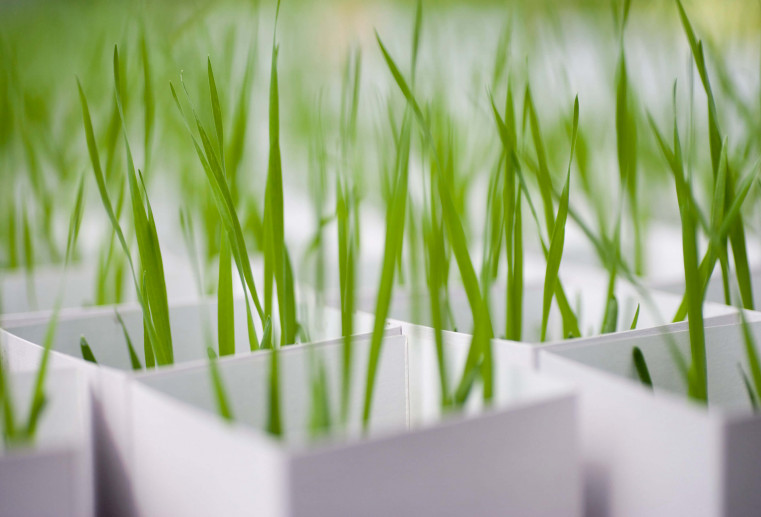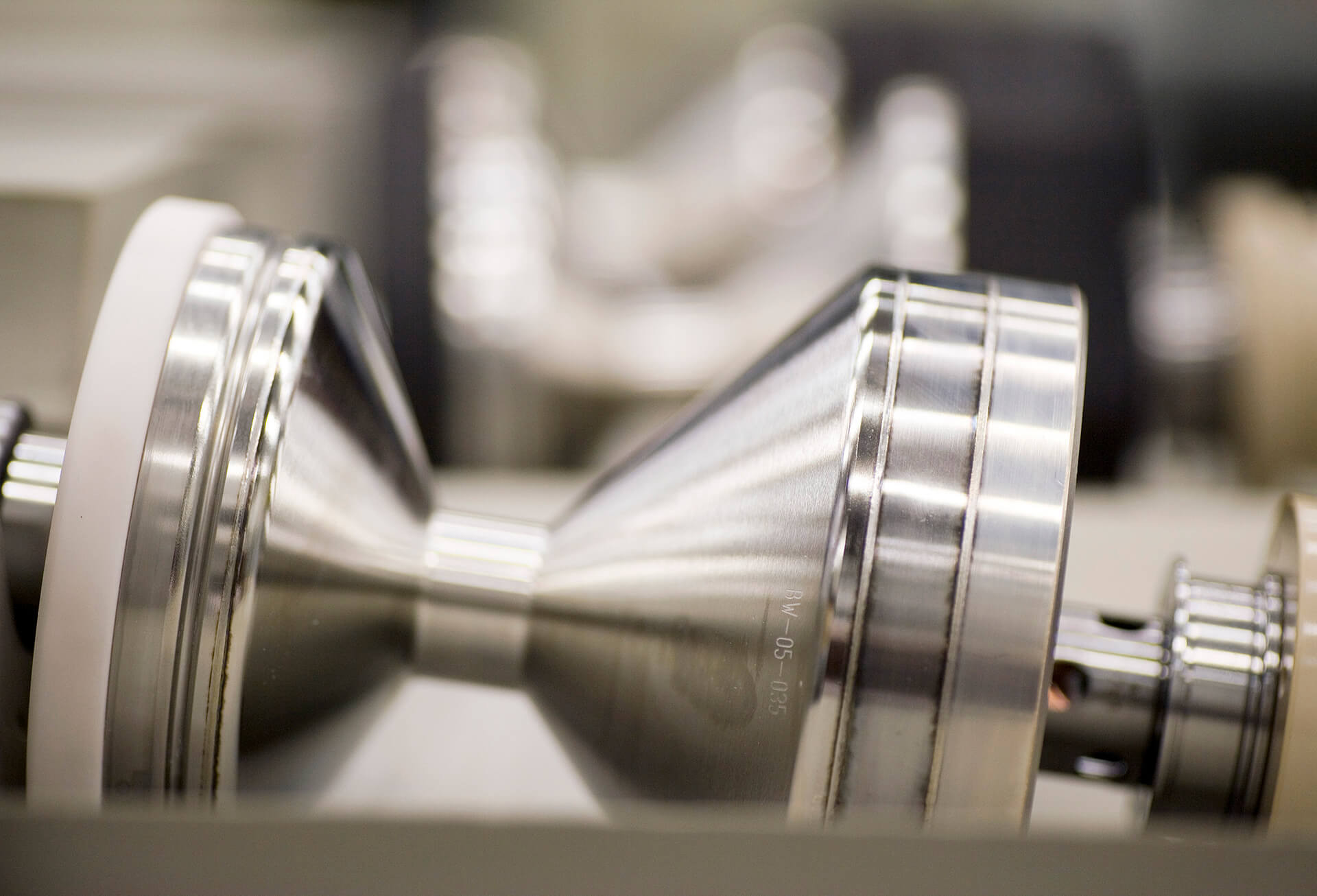
Nominee 2005
Chemie nach dem Vorbild der Natur

The decisive step is to find ways to increase crop yield of fields and plantations. Hubert Sauter and Klaus Schelberger brought these efforts forward in an innovative step. Their approach was to protect plants from fungal diseases – like rust in soybeans, leaf and glume blotch in cereals, or mildew on grape vines. Until 2004, Hubert Sauter was the director at BASF AG for fungicide research, Klaus Schelberger headed biological research and development of fungicides at the BASF Ludwigshafen until 2003.

Crop protection and fortification
The nominated researchers created a substance that not only protects a number of cultivars effectively from fungal disease, but is also environmentally friendly – and also fortifies the plant’s vitality.
more details
Resumes

Dr. rer. nat. Hubert Sauter
- 09.02.1944
- geboren in Rodalben, Pfalz
- 1964 – 1970
- Studium der Chemie, Philosophie und Psychologie an der Universität
Freiburg i. Br. - 1970
- Doktorand am Chemischen Laboratorium der Universität Freiburg
- 1973
- Promotion in Organischer Chemie
- 1974 – 1975
- Postdoktorand am Chemistry Department der Harvard University,
Cambridge, USA - 1975 – 1976
- Wissenschaftlicher Assistent in der Organischen Chemie in Freiburg
- 1976
- Eintritt in die BASF Aktiengesellschaft, Ludwigshafen
Chemische Suchforschung Pflanzenschutz: - 1976 – 1978
- Wissenschaftlicher Mitarbeiter Fungizide und Wachstumsregulatoren
- 1979 – 1982
- Aufbau des neuen Arbeitsgebietes Bioregulatoren;
Pflanzliche Stoffwechselprofile als neuartige Diagnosemethode - 1982 – 1986
- Leiter des Fachgebietes Fungizide und Bioregulatoren
- 1986 – 1996
- Gruppenleiter Fungizide
- 1996 – 2004
- Wissenschaftlicher Direktor, Forschung Fungizide
Ehrungen:
- 1976
- Gödecke-Forschungspreis der Universität Freiburg (Dissertation)
- 1996
- Innovationspreis der BASF Aktiengesellschaft (Strobilurine)
- 2000
- "Hero of Chemistry" der American Chemical Society (Strobilurine)

Dipl.-Ing. (agr.) Klaus Schelberger
- 09.01.1942
- geboren in Neustadtl / Österreich
- 1961 – 1963
- Grundschullehrer
- 1963 – 1969
- Studium der Landwirtschaft an der Hochschule für Bodenkultur in Wien
- 1969
- Diplom
- 1970
- Eintritt in den Unternehmensbereich Pflanzenschutz
der BASF Aktiengesellschaft, Ludwigshafen: - 1970 – 1974
- Fachinformation und Marktpflege Pflanzenschutz
- 1975 – 1979
- Biologische Entwicklung Herbizide
- 1979 – 1987
- Leiter der Landwirtschaftlichen Versuchsstation der BASF
in Utrera, Spanien - 1987 – 1990
- Biologische Entwicklung Fungizide
- 1990 – 2003
- Leiter Biologische Entwicklung Fungizide
Contact
Spokesperson
Dr. rer. nat. Hubert Sauter
Früher Wissenschaftlicher Direktor
Chemische Forschung Fungizide
BASF Aktiengesellschaft
Carl-Bosch-Straße 38
67056 Ludwigshafen
Tel.: +49 (0) 621 / 37 83 53
E-Mail: hubert.sauter@gmx.com
Press
Bernd Gerling
Agricultural Products
Global Communications
BASF Aktiengesellschaft
Carl-Bosch-Straße 64
67117 Limburgerhof
Tel.: +49 (0) 621 / 60 28 655
Fax: +49 (0) 621/ 60 28 470
E-Mail: bernd.gerling@basf-ag.de
A description provided by the institutes and companies regarding their nominated projects
The global population is growing at terrific speed – particularly in many developing nations. Agricultural acreage, however, has hardly changed.How can we possibly feed the ever increasing number of people?
The decisive step is to find ways to increase crop yield of fields and plantations. Hubert Sauter and Klaus Schelberger brought these efforts forward in an innovative step. Their approach was to protect plants from fungal diseases – like rust in soybeans, leaf and glume blotch in cereals, or mildew on grape vines. Until 2004, Hubert Sauter was the director at BASF AG for fungicide research, Klaus Schelberger headed biological research and development of fungicides at the BASF Ludwigshafen until 2003.
Crop protection and fortification
The nominated researchers created a substance that not only protects a number of cultivars effectively from fungal disease, but is also environmentally friendly – and also fortifies the plant’s vitality.
The starting point in the development of the new active ingredient called F 500 was a discovery the researchers made while studying a pine cone fungus. The inconspicuously small forest fungus keeps other fungi at a distance in the competition for food on the forest floor by producing and secreting a natural fungicide: Strobilurin A. By modifying the chemical structure of this substance, the BASF researchers synthesized F 500 in the laboratory. As a crop protection solution modeled on a natural substance of a fungus, this substance is an innovation.
Cellular respiration in fungi is blocked
F 500, like the other strobilurins, specifically targets the germination of spores in fungi and blocks a specific stage of their cellular respiration. The result: the funguses die off. The advantage: while this mechanism is effective against numerous funguses, other living organisms are not affected. The point in the application of the unusual active ingredient, however, is that – over and above its action against fungal disease – it also improves the crop resistance to stress factors and their susceptibility to diseases. An obvious sign of the increased vitality of plants treated with F 500 is the intense green of their leaves.
BASF introduced the versatile fungicide to the market in 2002. Since then it has become the leading weapon against fungal diseases in many parts of the world: for example, in South America, where Asian soybean rust appeared for the first time in 2002 which in some regions threatened the entire harvest. Farmers succeeded in controlling the disease by using F 500.
The right to nominate outstanding achievements for the German Future Award is incumbent on leading German institutions in Science and Industry as well as foundations.
The Project „Green, healthy, and high crop yield: F 500 – Plant health through agrochemicals from natural substances“ was nominated by Bundesverband der Deutschen Industrie.


 Gebärdensprache
Gebärdensprache
 Leichte Sprache
Leichte Sprache







